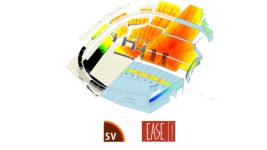LIVE
20 Aug 2024
FOHP Australia Is Under Control with d&b audiotechnik SL-Series
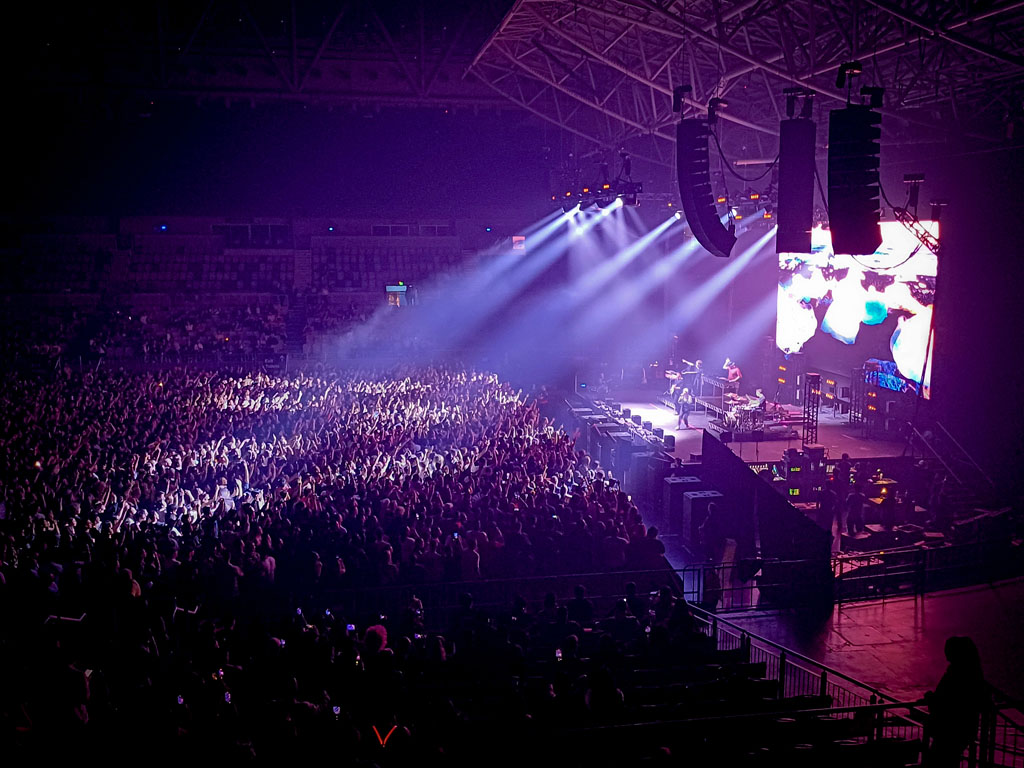
Subscribe to CX E-News
Melbourne’s Front of House Productions (FOHP Australia) have literally built their house on d&b audiotechnik PA, with the founding of their company starting with the purchase of a V-Series line array after the series release in 2012. With their mission statement to deliver a “no-compromises, multidisciplinary AV solution”, FOHP Australia are building on their d&b base by upgrading to d&b’s SL-Series, adopting the KSL range into live production, and installing XSL into prominent venues including The Northcote Theatre.
“For live production, we now have 24 KSL line array elements, comprising 20 KSL8s and four KSL12s,” says Jesse Mahoney, Head of Audio at FOHP Australia. “To go with them, we’ve got eight SL-SUBs, with another eight on the way. My game plan is to homogenise our whole inventory to SL-SUBs for big gigs and retain our existing inventory of V-SUBs for the smaller ones and stage-fills.”
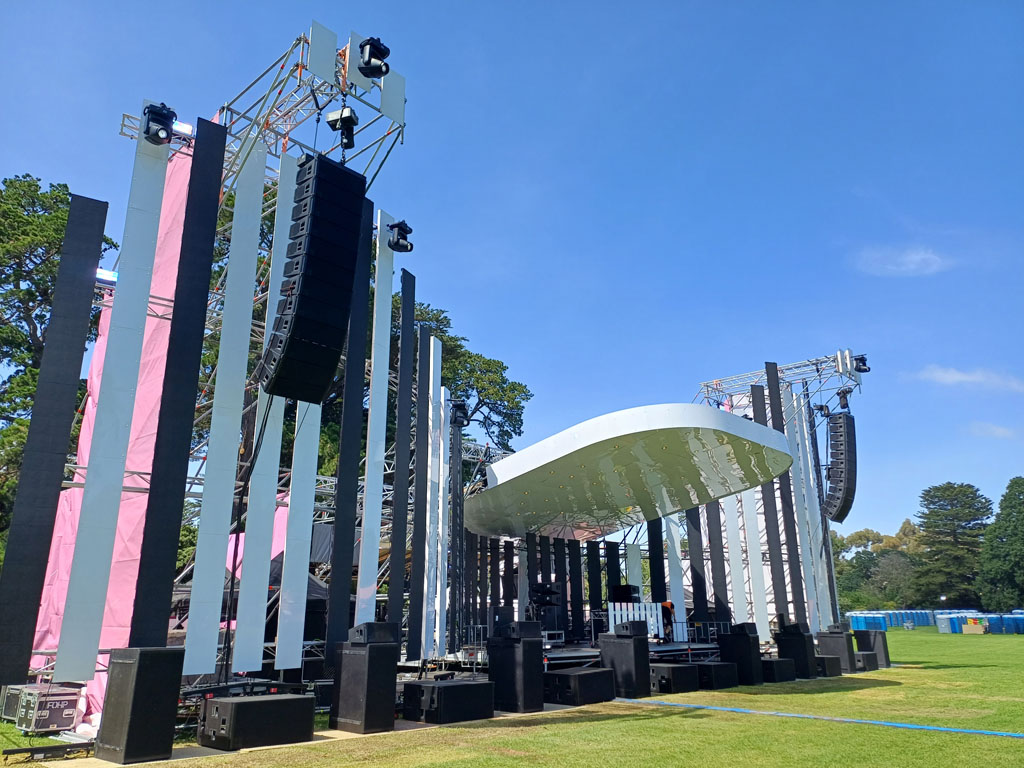
While clocking in as physically smaller than the ‘flagship’ GSL line array elements, KSL has hit a sweet spot of size to power ratio. “There’s a lot of massive world tours at the moment that are running KSL,” relates Jesse. “Taylor Swift’s Eras is all KSL, and I’ve got quite a few friends that are touring at the moment with KSL systems that are only being upgraded to GSL when they hit stadiums. For arenas and the outdoor festival market, KSLs are right on the money.”
In Control
In FOHP Australia’s case, a lot of the time it’s what the PA doesn’t cover that is most important on the gig. “With the advent of the SL-Series and its native cardioid technology, there’s now no better directivity on the PA market,” reports Jesse. “It’s a great value proposition for our customers that we can put sound where it needs to be and keep it away from where it shouldn’t be. A large part of our market is dance parties, and promoters are always trying to find a point of difference for their event, so they like to do gigs in interesting places that are not typical event spaces. We’ve got a long-standing relationship with a venue in St. Kilda called The Riviera Beach Club. It’s a couple of hundred metres from residences, so there’s some pretty serious noise abatement issues. Because of the pattern control of the d&b SL-Series ecosystem, we can put sound on their audience whilst predicting that we can keep it away from the residences with great confidence, which makes it a sustainable business proposition for the promoters.”
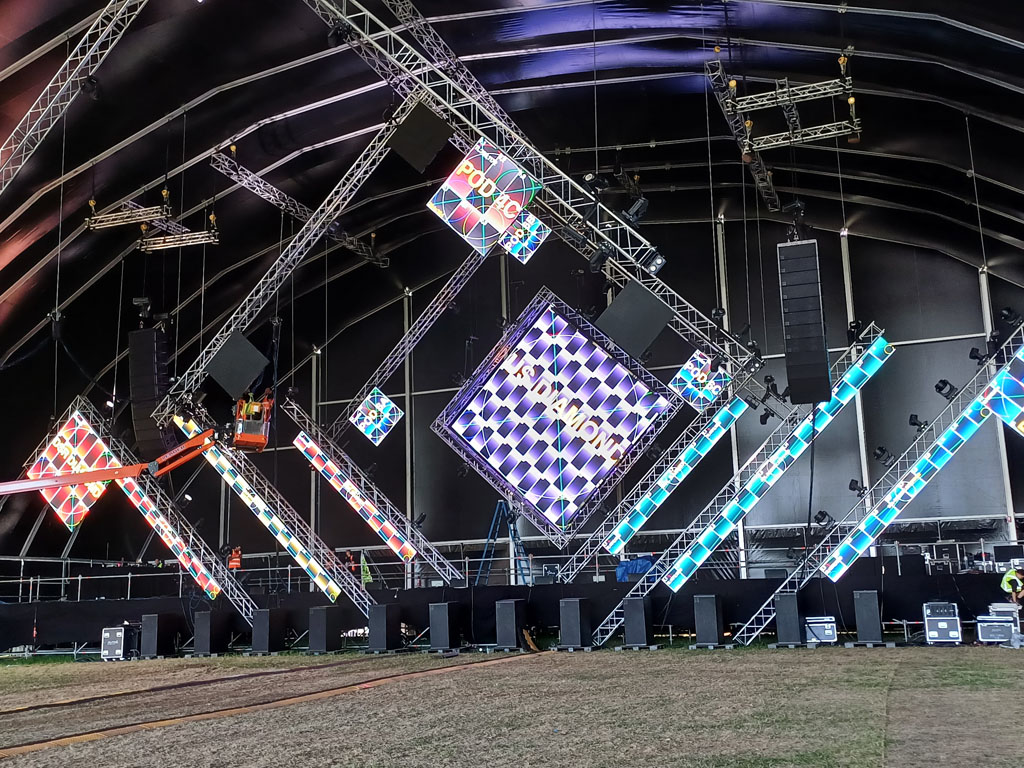
Sometimes it’s not the neighbours, but more PA next door. “All of the multistage festivals held around Melbourne are concerned with bleed between stages,” states Jesse. “d&b has been the go-to product for all of those events for years. And when we do festivals that are in acoustically challenging spaces like tents, having cardioid top boxes really clears that up on stage too, making it easier for the performers to do their job.”
The d&b System Tech Workflow
Jesse and the team utilise d&b’s software and intelligent DSP ecosystem to make every day at work a lot easier. “We make a lot of use of the system check capabilities in the d&b amplifiers,” offers Jesse. “You can run a self-check process after the load-in and then run it again at the end of your gig to see if there’s been any drift or failures in your drivers. You can do tests via the software that will tell you if you’ve plugged in all the boxes correctly. If you’re following the d&b process step by step, all of the guesswork is taken out of it.”
d&b’s supporting suite of software tools ensure the gig is under control, from conception to delivery. “You can predict performance beforehand with the ArrayCalc software, you can control it via the R1 software and verify your deployment, then you can use ArrayProcessing to make it sound the way that it is supposed to sound. As a system engineer, it’s amazing. You know in the first four bars of your soundcheck song if you’ve done it right or not.”
d&b’s unique ArrayProcessing capabilities have revolutionised voicing and coverage when using multiple sources. “ArrayProcessing gives each hang within a system a common voicing,” explains Jesse. “You can have a main hang in an arena that is very flat with a little J curve at the bottom because it’s throwing 120 metres. You might have side hangs next to that that are heavily curved because they need to point up to grandstand seating that is quite close. Before ArrayProcessing, those two very different physical deployments would require a bit of touching up to get them to blend in their overlapping coverage zones.
ArrayProcessing applies an ideal voicing curve across every ArrayProcessed system, so you don’t need to do any EQ and level optimisations between these different systems. It speeds up the workflow of our load-in and system optimisation process massively.”
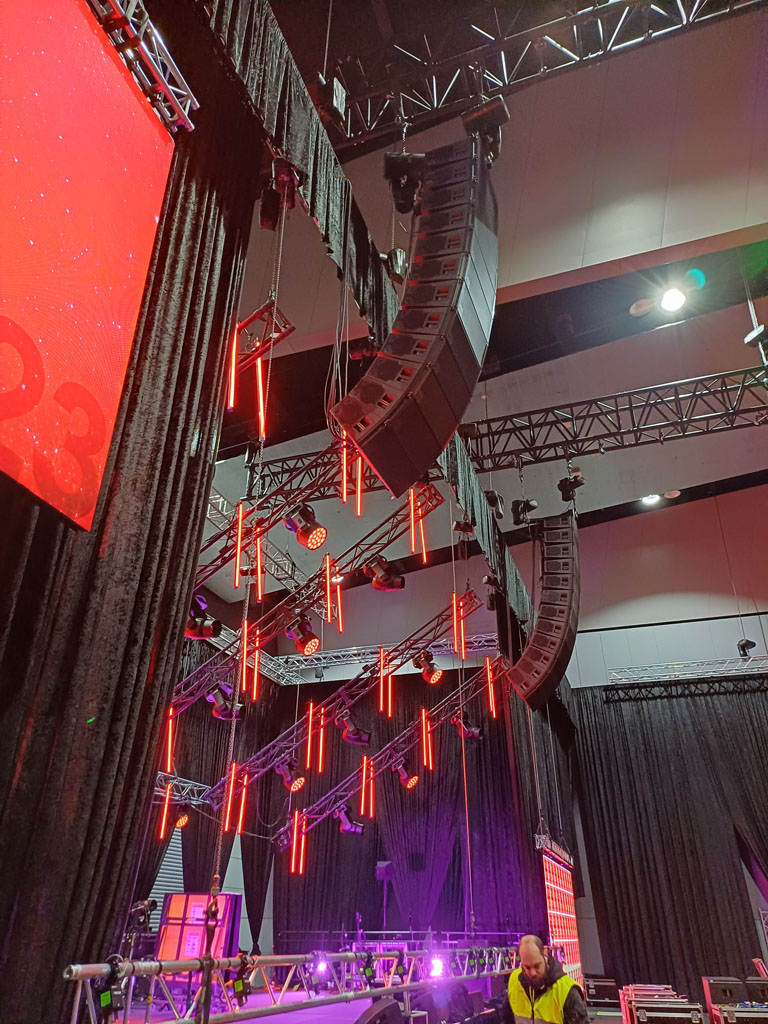
The Bottom Line
“There were three aspects to our decision to invest in SL-Series,” says FOHP Australia’s Director Paul Muller. “The first was the demand side; as a business owner, you’re in the sales business, whether that’s your job title or not. And it’s invariably a lot more expensive, time consuming, and difficult to be trying to convince somebody to do something than for them to be calling you and saying, “Hey, here’s what I want”. My old boss once said; “If you’re explaining, you’re losing”, and we don’t have to explain SL-Series to our customers at all.”
“The second is workflow,” continues Paul. “As an existing d&b house, the workflow being consistent from the smallest speaker all the way through to the largest line array means that that we only have to train people once. It also helps me have the confidence that I can find engineers in the market that have already have done the d&b system training. At the moment, as we go through a period of patchy technical skills availability, the last thing you want to hear is that you need a specific person doing a gig because only they can get the best sound out of a system. I don’t want to have that ‘Unicorn’ person deploying PAs. I don’t want to have to rely on them being in the country, not sick, able to travel, that their kids are okay, or whatever it might be. I want to know that whoever goes out there, they’re going to be able to get the system to do what’s required.”
“The third would be that SL-Series has enabled us to confidently engage the 6,000 to 16,000 capacity space,” concludes Paul. “I think it’s recognized as a statement of intent and capability that we as a company continue to invest in the long term professional audio business. When people see KSL on our gear list, all the objections go away. It’s at the nexus of our promise of world class people, processes, and infrastructure, which our customers seek. The SL-Series was the missing piece of that three-legged stool. The SL-Series was the last piece that says ‘this is a no compromises audio outfit’.”
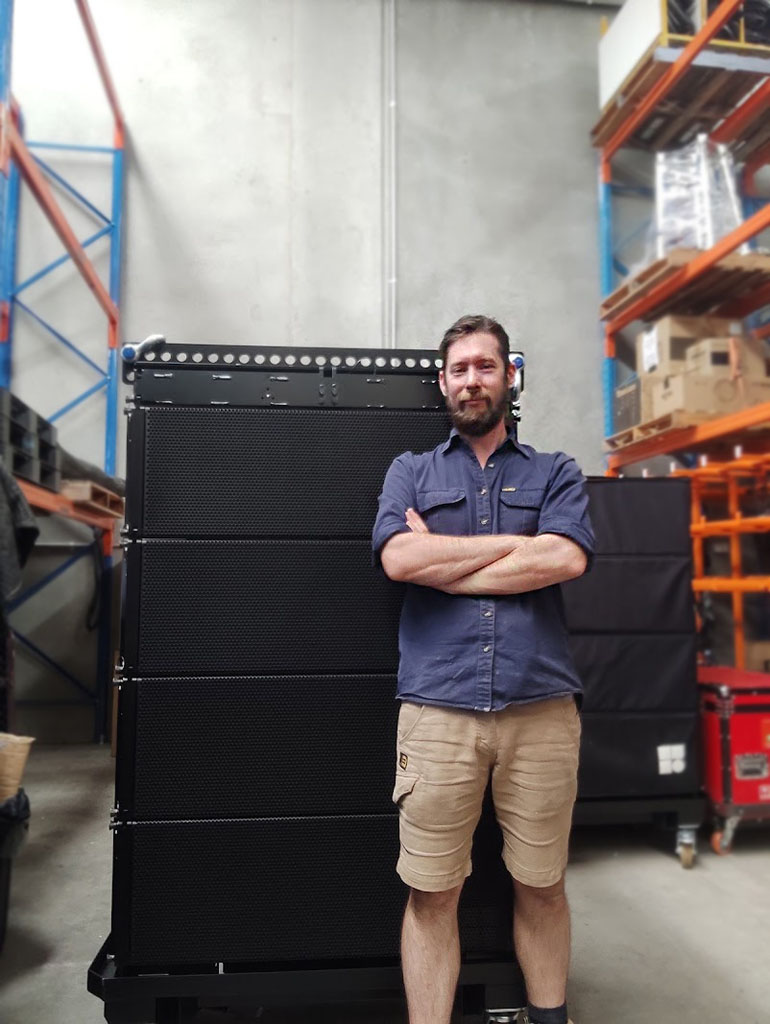
Jesse Mahoney agrees; “SL-Series has given us the tools to engage with on a level playing field, knowing that our sound quality is going to be as good as any company can deploy.”
Subscribe
Published monthly since 1991, our famous AV industry magazine is free for download or pay for print. Subscribers also receive CX News, our free weekly email with the latest industry news and jobs.

